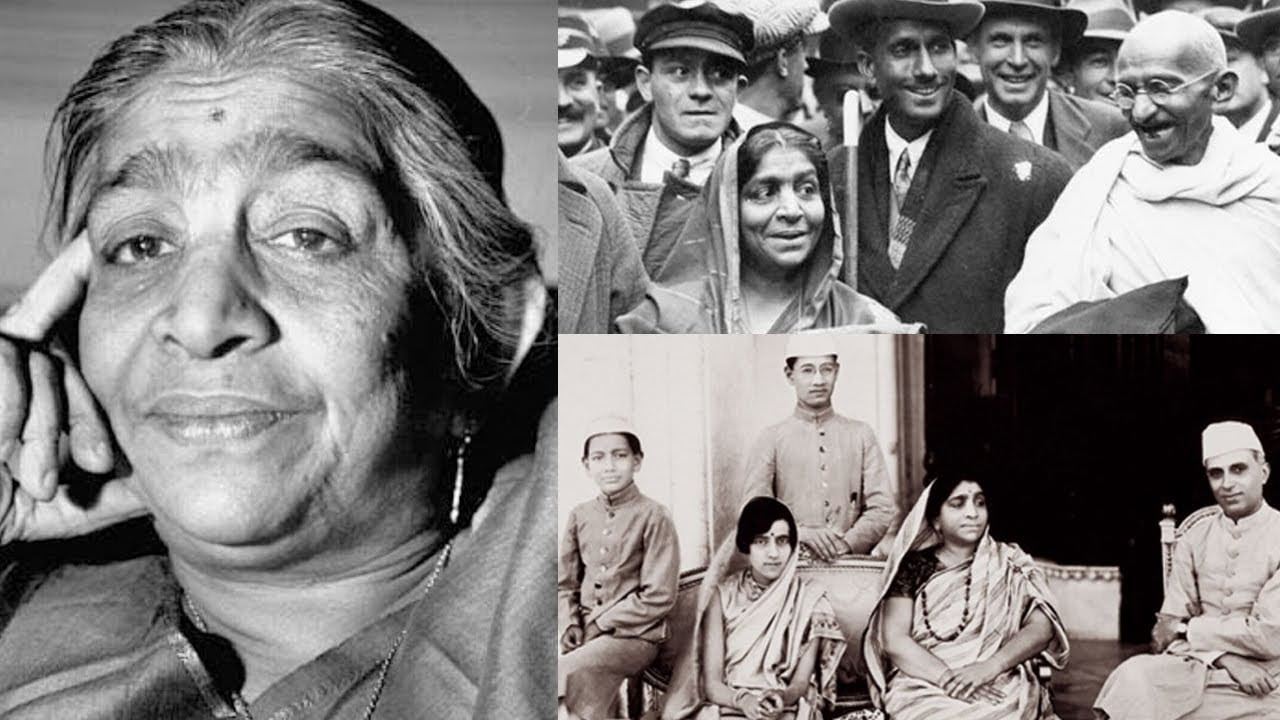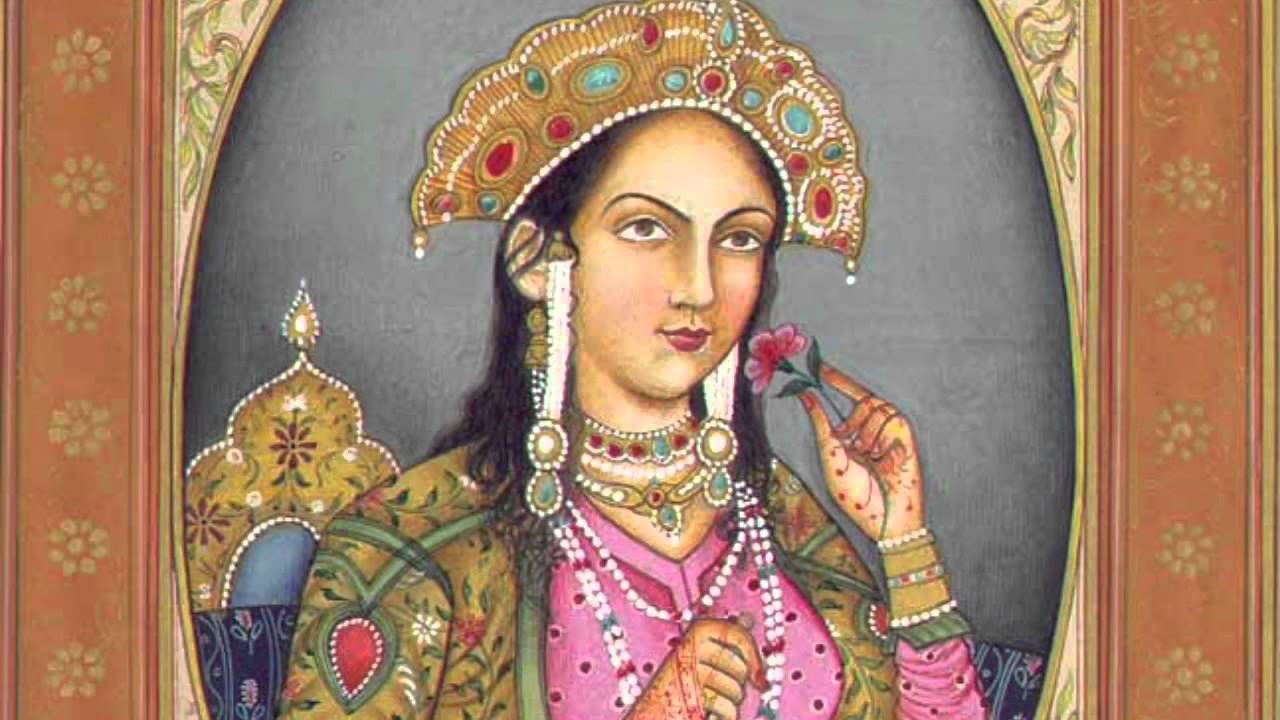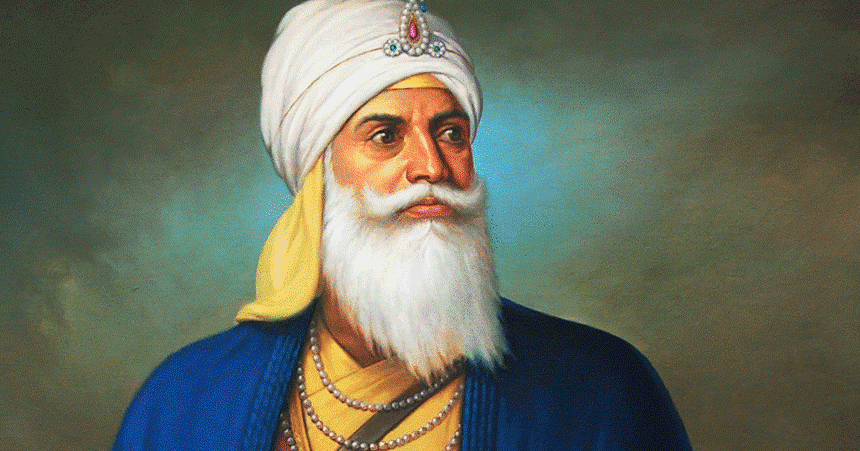Bal Gangadhar Tilak Biography: Scholar, Nationalist and Freedom Fighter
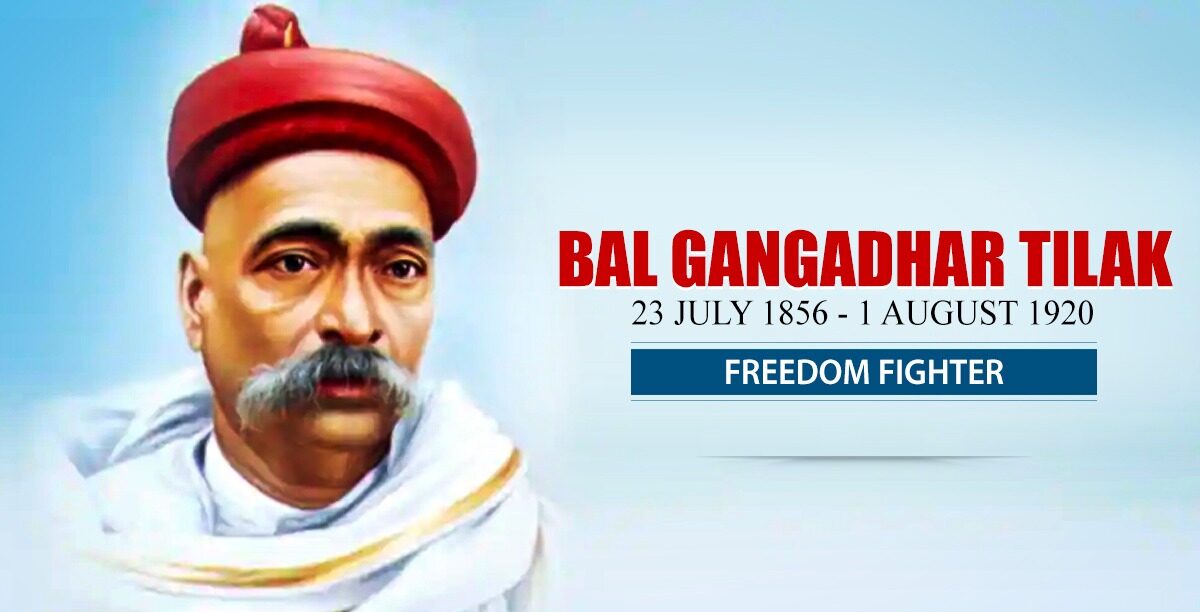
Bal Gangadhar Tilak
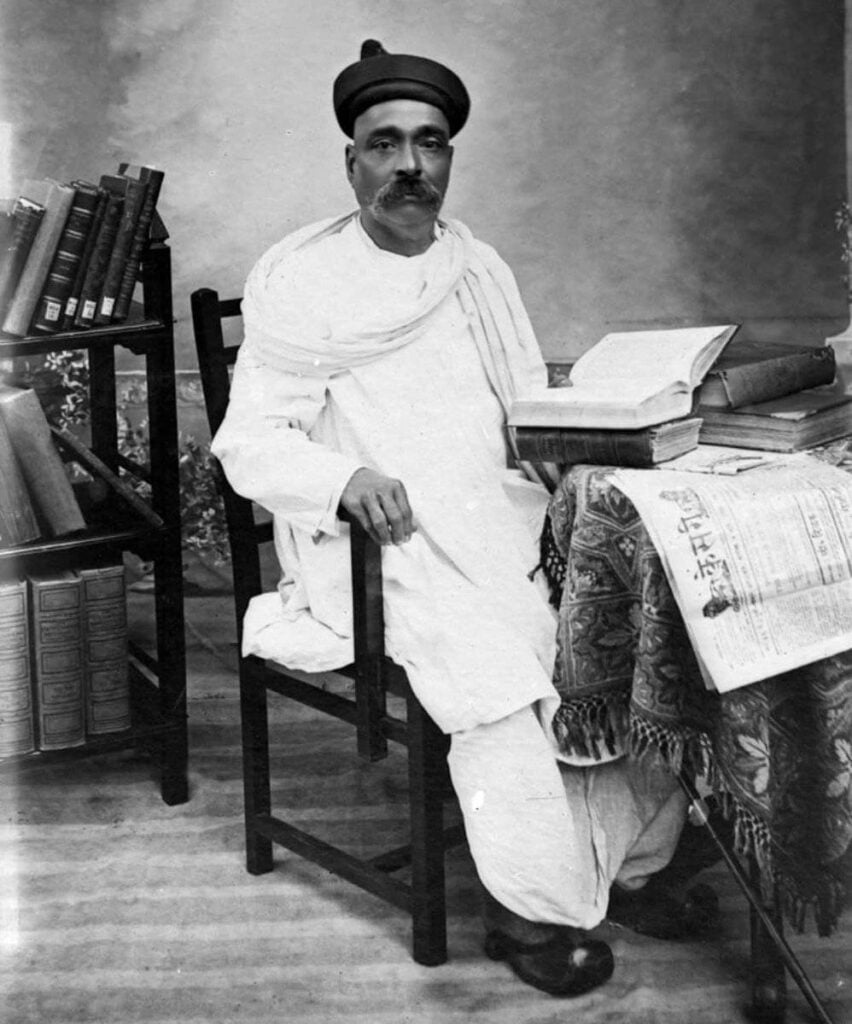
Bal Gangadhar Tilak, also known as Lokmanya Tilak was a very important person in India. He was smart and studied many things like math and philosophy. He helped India freedom movement a lot. Tilak went from a normal man to someone who wanted big changes. He supported self-rule and Indian-made goods for India. This affected how people fought for India’s freedom. As a leader of India, Tilak still gives people courage. His teaching made life better for many Indians.
| Attribute | Details |
|---|---|
| Full Name | Bal Gangadhar Tilak |
| Born | July 23, 1856 |
| Place of Birth | Ratnagiri, Maharashtra, India |
| Died | August 1, 1920 |
| Place of Death | Mumbai, Maharashtra, India |
| Known for | Indian Nationalist, Social Reformer |
| Political Affiliation | Indian National Congress, Indian Home Rule Movement |
| Contributions | Supporter of Indian self-rule, Leader of Indian National Movement, Promoter of Swadeshi Movement, Educationist |
| Famous Slogan | “Swaraj is my birthright, and I shall have it” |
| Publications | Authored “Gita Rahasya” and “The Arctic Home in the Vedas” |
Key Takeaways
- Tilak moved from being quiet to loud. This impacted India’s National Movement.
- Tilak pushed for Swaraj and Swadeshi. This made many feel more nationalistic.
- Tilak’s work is still an inspiration to many people.
- Tilak helped to set up schools. They have changed India forever.
- Tilak was put in prison and fought legal battles. This showed his strong will to free India.
Family

Bal Gangadhar Tilak Parents
| Parent | Details |
|---|---|
| Father | Gangadhar Ramchandra Tilak |
| – School teacher and Sanskrit scholar | |
| Mother | Parvatibai Gangadhar |
Bal Gangadhar Tilak Spouse
| Information | Details |
|---|---|
| Name | Satyabhamabai Tilak (née Tapibai Bal) |
| Marriage year | 1871 |
| Age at marriage | Bal Gangadhar: 16, Satyabhamabai: around 12 (exact age unknown) |
Bal Gangadhar Tilak Children
| Child | Birth Date | Death Date | Age at Death |
|---|---|---|---|
| Rambhau Balwant Tilak | 1872 | 1950 | 78 |
| Vishwanath Balwant Tilak | 1873 | 1891 | 18 |
| Sridhar Balwant Tilak (Shridharpant) | 1896 | 1928 | 32 |
Rambhau Balwant Tilak:
- Eldest son, born in 1872 and died in 1950 (78 years old).
- A writer and journalist, contributing to his father’s publications “Kesari” and “Maratha.”
Vishwanath Balwant Tilak:
- Second son, died as young in 1891 at the age of 18.
- Very little is known about his life due to his young age at the time of his passing.
Sridhar Balwant Tilak (Shridharpant):
- Youngest son, born in 1896 and lived until 1928 (32 years old).
- Involved in social work and the Indian independence movement with his father.
- Held the title of “Lokmanya” after his father death.
- Served as a member of the Rajya Sabha the upper house of the Indian Parliament.
The Early Life of Bal Gangadhar Tilak
Birth and Education
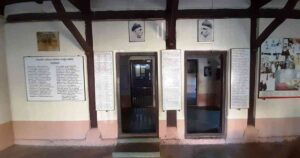
Born on July 23, 1856, in Ratnagiri, Maharashtra.He initially learned in Marathi his native tongue. He later studied in Pune for higher education. At Deccan College, Tilak completed his Bachelor in Math and Sanskrit.
- Primary Education: Marathi medium school in Ratnagiri
- Higher Education: Deccan College, Pune
- Degrees Earned: Bachelor’s in Mathematics and Sanskrit
From Math Teacher to Nationalist Leader:
Bal Gangadhar Tilak knew how important it was to bring all Indians together. He helped political activists work together peacefully. He really worked hard to give the government their demands.
- Tilak began as a math instructor but quickly got into public affairs and social reforms.
- He launched the New English School and the Deccan Education Society. They focused on an education system deeply grounded in Indian ways.
- He transformed into a journalist too. His words became a weapon to challenge British control while pushing for Indian autonomy.
Bal Gangadhar Tilak Role in the Indian National Movement
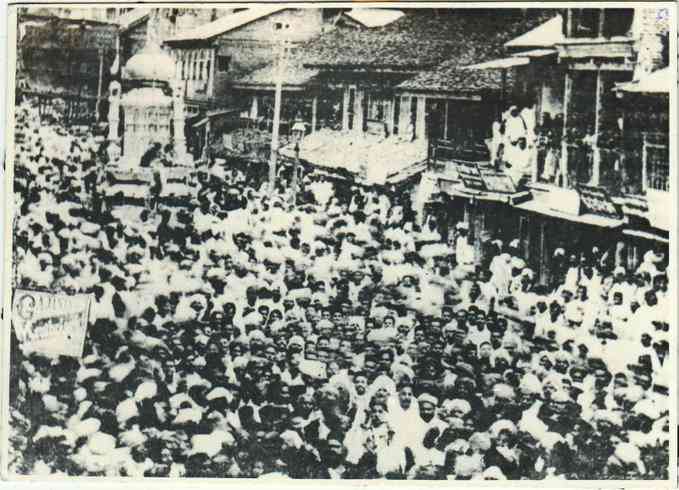
Contribution to the Swadeshi Movement
Bal Gangadhar Tilak was key to the Swadeshi Movement. He was a big supporter of boycotting British items. He suggested using Indian goods. This idea made Indians feel proud. It also taught them to be economically independent. Here are some major happenings of the movement:
- In 1905, Bengal split happened. It caused a lot of protests and rise the Swadeshi Movement.
- They set up Indian businesses like Calcutta Potteries and Bengal Chemical.
- They used things like the charka a symbol everyone knew to inspire the people.
Tilak’s push for Swaraj, meaning self-government, sparked wide support. Organizing Swadeshi melas(fairs) and boosting local crafts, he boosted the freedom movement economic side.The British government attempts to suppress the movemen, such as threatening to withdraw grants from students only fueled the fire of resistance.
Formation of Home Rule League
Bal Gangadhar Tilak and Annie Besant, following the creation of the Home Rule League united for India self-governance. The phrase ‘Home Rule’ inspired by the Irish sought self-rule within the British Empire similar to colonies like Australia and New Zealand.
Different regions had different league operations. In Maharashtra (excluding Bombay City), Karnataka, the Central Provinces, and Berar, Tilak’s league was active. Besant’s league reached out across the rest of India. Despite their grit and determination the leagues face numerous obstacles:
- Lack of effective organization, leading to loose formations.
- Communal riots during 1917-18 weakened the movement.
- The Montague-Chelmsford reforms and other pacifying measures divided leaders and reduced participation.
Even with some hurdles the Home Rule League movement rightly guided the attention from learned top-level people to ordinary individuals. It formed a fresh batch of nationalists paving the way for the movement led by Gandhi. The Lucknow Pact in 1916, was a major success, serving as a link between calm and radical groups.
Bal Gangadhar Tilak Impact on Indian Society
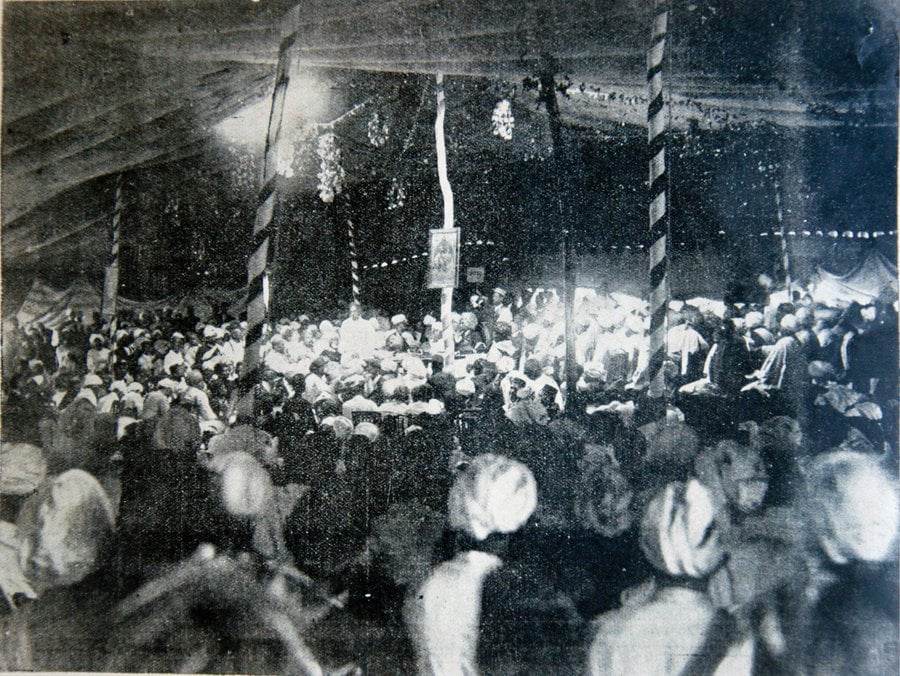
Promotion of Swaraj and Swadeshi
Bal Gangadhar Tilak championed Swaraj, or self-rule, which was tightly connected to promoting Swadeshi products. The Swadeshi movement went beyond simply rejecting British goods it aimed to boost Indian businesses and restore age old crafts. This was a rally towards self sustainability and a sense of national dignity.
- Swadeshi textile mills and other industries were started. They boosted the economy and gave people jobs.
- National schools and colleges were set up to teach in local languages.
- Public meetings and Swadeshi melas (fairs) were organized to spread the message and unite people for the cause.
Utilization of Traditional Festivals
Bal Gangadhar Tilak brilliantly used traditional festivals to unite people and ignite a sense of nationalism. He transformed the Ganapati festival into a grand public event, turning it into a platform for political discussion and resistance against British rule. Similarly, he used the Shivaji festival, celebrating the legacy of the Maratha warrior king, which provide a sense of pride and national identity among Indians.
- Ganapati Festival: Became a medium for spreading nationalist ideas.
- Shivaji Festival: Retold, the past stories of courage to inspire Indians.
Influence on Extremist Leaders
The effect that Bal Gangadhar Tilak had on the extremist group within the Indian National Congress was deep. His fiery spirit and strong dedication to Indian independence sparked a flame in other passionate individuals. They also wanted to boost up the fight against British authority.
- Bal Gangadhar Tilak
- Lala Lajpat Rai (1865-1928)
- Bipin Chandra Pal (1858-1932)
- Aurobindo Ghosh (1872-1950)
Bal Gangadhar Tilak Legal Confrontations

Opposition to British Policies
Bal Gangadhar Tilak was a hard-hitting critic of any British rule he deemed unfair to Indians. He didn’t only raise his voice; he made real and thoughtful plans. Along with his team, Tilak launched several drives against the British. Some of his notable measures were pushing for tariffs on cotton to safeguard India trade and advocating for more Indians in government roles to increase their authority.
List of the British Policies he opposed:
- Advocating for import duty on cotton (1875)
- Proposing an All India Fund for Political Agitation
- Demanding the Indianization of Government Service (1878-79)
- Conducting a campaign in Britain to support the Pro-India party
- Protesting against Lord Lytton’s Afghan campaign
- Opposing the Vernacular Press Act (1878)
- Resisting the Arms Act (1878)
- Protesting against plantation labor conditions
- Opposing the Inland Emigration Act
- Supporting the Ilbert Bill
Imprisonment and Legal Consequences
1897:
Tilak’s first major legal confrontation came in 1897. He was arrested and charged with “sedition” because of what he wrote in the Kesari newspaper. His writings about Britain poor management of the Tirah campaign upset the British. They thought he was stirring up violence and hatred against them. The court decided he was guilty. His punishment was six years behind bars.In 1901 he released from prison.
1908:
In 1908, Tilak was arrested again. This happened because of his part in the Ganesh Chaturthi festival. The British government had said no to celebrating the festival in public. But Tilak still put together a big public celebration. He was found guilty and sent to jail for six years.He was released from prison in 1914.
1916:
In 1916, Tilak was arrested again. This was for his role in the Home Rule movement. The Home Rule movement tried to give India its own government. Tilak was one of the big people in this movement. He was found guilty and got one year in prison.
The British government, wanting to stop all disagreement, passed a group of laws meant to make voices like Tilak’s be quiet.Look at what the laws were like during that time:
- 1898: Amendments to IPC Section 124 A made sedition laws more stringent.
- In 1904, two laws were passed that limited freedoms: the Official Secrets Act and the Indian Universities Act. The laws made freedoms harder.
- Between 1907 and 1911, several laws were passed that aimed to limit nationalist actions. These laws included the Seditious Meetings Act and Indian Press Act.
Bal Gangadhar Tilak Legacy and Influence
Role in Indian Nationalism
Bal Gangadhar Tilak have a importance in Indian nationalism. He was a joining power that helped change a broken society into a together movement for freedom. His leadership during the Extreme Time of the Indian National Movement from 1905 to 1916 was very important. He talked for people ruling themselves and did not agree with British rules, which sounded right to many people.
- Leadership: Vanguard of Change
- Objectives: Extremists’ Call for Self-Governance
- Key Features: Defying Partition, Asserting Swaraj
- Key Events: Bengal Partition Sparks Swadeshi and Revolt
- Outcome: Aggression, Repression, and National Mobilization
Tilak worked hard to bring together different social groups, going beyond language, culture, and place. This unity was very important for India’s future success in becoming free from British rule. The British economic rules, which hurt all parts of Indian society, made people want freedom more under Tilak’s lead.
Comparison with Other Nationalist Leaders
Bal Gangadhar Tilak stood out from other leaders during India’s independence movement. His methods were bolder and more straightforward than others. Most leaders wanted a milder path. But Tilak’s demand for Swaraj, or self-rule, was a bold idea then. It motivated many people to fight for freedom.
- Moderates: Supporter for gradual reforms and constitutional methods.
- Extremists: Pushed for immediate self-rule and were willing to adopt more confrontational tactics.
Tilak’s comparison with other nationalist leaders can be seen in the table below:
| Leader | Philosophy | Approach |
|---|---|---|
| Bal Gangadhar Tilak | Swaraj & Swadeshi | Direct action & Boycott |
| Gopal Krishna Gokhale | Gradual Reforms | Constitutional methods |
| Lala Lajpat Rai | Swaraj | Aggressive nationalism |
Bal Gangadhar Tilak Books

- The Arctic Home in the Vedas (1903): This book says that the Aryans, who were the ancestors of Hindus, came from the Arctic region and moved south to India. The book argues they originally lived in the Arctic. Most scholars do not agree with this idea, but it was important to Tilak when he was alive.
- Srimad Bhagavad Gita Rahasya (1915): This book explains the meaning of the Bhagavad Gita, an important religious text in Hinduism. Tilak’s ideas about what the Gita teaches were different from most. He believed the Gita encouraged people to work for positive change in society, not just focus on spiritual ideas.
- Gathasaptasati (1919): This book contains 700 poems written in Sanskrit that were translated into the Marathi language by Tilak. The poems talk about love, nature, and the inner qualities of humans.
Bal Gangadhar Tilak Newspapers
Kesari
Kesari was a Marathi newspaper started in 1881. It told about Tilak’s ideas for politics and society. Kesari was known for its strong opinion pieces. It did not like British rule. It also supported the swadeshi movement. This movement wanted Indians to not buy British goods and not use British groups.
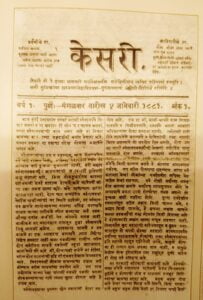
Mahratta
Mahratta was a newspaper published in English started in 1881. It wanted to reach more people than Kesari. Mahratta talked about world news and politics. It also wanted India to rule itself, not Britain. The newspaper often wrote articles that did not like how Britain was ruling India.

Bal Gangadhar Tilak Contribution to Education
Establishment of Educational Institutions
Bal Gangadhar Tilak was not only a freedom fighter but also a visionary in education. He knew how powerful knowledge is and how important good schooling is for India’s fight to be free. Tilak helped set up schools that taught Indian culture and beliefs along with modern learning.
- In 1880, Tilak helped start a new school in Pune called the New English School. This school was one of the first schools in India that gave a good education to Indian students.
- In 1884, Tilak started the Deccan Education Society. This group helped create many schools, including Fergusson College.
- In 1894, Tilak revived the public celebration of Ganesh Chaturthi. This festival became a major cultural and political event in India.
Advocacy for Meaningful Education
Bal Gangadhar Tilak didn’t simply establish schools; he aimed to reshape people’s perspective on education. In his view, education was more about igniting a spark than just storing knowledge. Tilak saw English education as a means to not just secure employment, but to bring people together and disseminate the ideals of liberty and democracy. His vision extended beyond this.
- He promoted learning in native languages boosting Indian traditions.
- He stood for education that broke textbook confines, incorporating fairness and equality thoughts.
- He favored pragmatic learning centered on life skills rather than just test preparation.
Remembering Bal Gangadhar Tilak Today

Scholarships
- The Lokmanya Tilak Scholarship, which is offered by the Government of India to students from economically backward families who are pursuing higher education.
- The Tilak National Memorial Trust Scholarship, which is offered to students from all over India who are pursuing research in the fields of science, technology or humanities.
- The Bal Gangadhar Tilak Scholarship, which is offered by the Indiabulls Foundation to students from economically backward families who are pursuing undergraduate or postgraduate education.
Statues and Memorials of Bal Gangadhar Tilak
Maharashtra:
- Statue at Chowpatty Beach, Mumbai: This iconic bronze statue stands overlooking the Arabian Sea, a popular tourist destination.
- Kesari Wada, Pune: A life-sized bronze statue at the entrance to Kesari Wada, the Kesari newspaper office founded by Tilak.
- Tilak Smarak Mandir, Pune: This grand memorial houses a museum dedicated to Tilak’s life and work.
- Birthplace Memorial, Ratnagiri: Tilak’s ancestral home has been preserved as a memorial with a statue in the premises.
- Lokmanya Tilak Smarak Mandir, Sangli: This temple-like structure houses a marble bust of Tilak.
- Statue at Supreme Court premises, New Delhi: This imposing statue stands within the complex of India’s highest court.
Other States:
- Statue at Parliament House Complex, New Delhi: A significant statue graces the premises of India’s central government.
- Statue at Central School for Tibetan Refugees, Bylakuppe, Karnataka:
- Statue at Bharat Sevashram Sangha, Varanasi, Uttar Pradesh: Honoring Tilak’s legacy of social service.
Beyond Statues:
- Tilak National Memorial Trust: Aims to promote research and education in India.
- Lokmanya Tilak Road, Dadar, Mumbai: A major city road named after him.
Conclusion
Bal Gangadhar Tilak’s legacy as someone who learned a lot and fought for his country is based on his strong belief in India becoming free. He changed from thinking changes should happen slowly to thinking they needed to happen fast. He supported people ruling themselves and goods made in India. He played an important role against splitting India into parts. This makes him a very important person in India’s fight to become free. Tilak helped education, writing in newspapers, and getting more people involved through celebrations. His work left a strong mark on the history of India’s movement to become independent.
FAQ’s
Why is Bal Gangadhar Tilak famous?
Tilak wanted India to rule itself. He did not like that Britain was in charge of India. He told people this in his books, talks and political work. He worked hard to end British control of India.
What was the ideology of Bal Gangadhar Tilak?
Tilak’s main idea focused on gaining Swaraj, complete self-control for India. He thought that India had the right to rule itself and that rule by outsiders was unfair.
What is the slogan of Bal Gangadhar Tilak?
“Swaraj is my birthright and I will have it!” This well-known slogan became a unifying message for the Indian independence movement. It captured Tilak’s unchanging faith in India’s right to govern itself.
What were Bal Gangadhar Tilak contributions to the Indian National Movement?
He started the Swadeshi Movement, and put together the Home Rule League. He strongly affected the Indian National Movement in many ways.
How did Bal Gangadhar Tilak promote Swaraj and Swadeshi?
Tilak spread ideas of self-rule and locally-made goods by supporting nationalist sayings, using usual celebrations and talking about how self-rule was needed for helping society and industry to improve.
What legal confrontations did Bal Gangadhar Tilak face?
Tilak disagreed with British rules, was put in jail and had legal problems because he helped people who wanted a rebellion. This included being sent to a prison in Mandalay (Burma, now Myanmar).
What role did Bal Gangadhar Tilak play in the Anti-Partition Movement of 1905-08?
Tilak helped a lot with the movement against splitting India into different parts. He made it a movement for all of India and said that self-rule was everyone’s natural right.
What was the significance of the Ganapati festival and Shivaji festival organized by Bal Gangadhar Tilak?
Tilak used these festivals to spread his ideas to many people and help them feel proud of their country. He played an important part in reaching out to large groups and sharing thoughts about nationalism.

